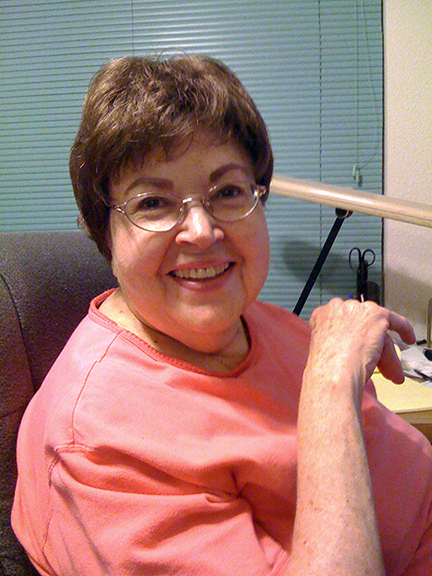Sara Kraft, PT, DPT, NCS, ATP, Assistant Professor, Medical University of South Carolina, Division of Physical Therapy, College of Health Professions, kraftsv@musc.edu
Navigating the seating and mobility world can be daunting for many with post-polio syndrome. Issues with scoliosis, back pain and even pressure problems can be quite serious for the person living with post-polio. If using a wheelchair, the solutions can be manageable and more easily rectified by customizing seat cushions or wheelchair backrests.
Read More…
 Grace Young
Grace Young
When I had polio at age 9, I was happy to have a wheelchair - any wheelchair - that would allow me the freedom to leave my bedroom. The only model available at that time was all wood with a cane back and wooden wheels. Undoubtedly it’s featured in the Smithsonian now. Large, heavy, clunky - forget taking it outside the house. It was a feat to even move it inside the house.
Read More…
A few months ago I flew to the east coast for a cruise and needed to take both my scooter and manual wheelchair. The problem was that both “vehicles” had loose parts and I was worried that something would get lost in the baggage compartment during the flight.
Read More…
Travel overseas - or anywhere - can be enjoyable, enriching, enlightening, or a complete disaster if your equipment ends up mutilated or at the wrong destination. You should have the adventures, not your wheelchair.
I have flown with a power scooter and a manual wheelchair, and have accompanied others who traveled with power wheelchairs. Air travel affords you less control over the destiny of your equipment than bus or train travel. But knowledge is power, and the more you know about traveling with equipment, the greater your changes of having a problem-free trip.
Read More…
I love to travel. No, I live to travel, and when I was mobile I did a lot of it, from camping here in the US to sightseeing in Europe.
Read More…
BABY, IT IS COLD OUTSIDE!
William G. Stothers
Snow and bone-chilling cold are making this a brutal winter across North America. And Phil the groundhog says it will go on for another six weeks.
Bad news for people stuck in this kind of weather, especially polio survivors. We know the snow-choked wheelchair wheels, snow-banked sidewalks and curb cuts, melting messes indoors, and that piercing wind chill.
Read More…
Many of us who had polio used canes, wheelchairs and bracing on our path to recovery and gradually were able to relinquish them. Others of us have developed different chronic conditions that have managed just fine until now without mobility equipment. But as we get older our bodies change, our symptoms escalate and daily activities use so much more energy that we don’t have the get-up-and-go to do what we have to do, much less enjoy the fun stuff. When walking becomes difficult, we have to compromise, reduce activities or eliminate them.
Read More…
If you’re at risk of falling or have some balancing problems you might want to consider using a walker. It is imperative that your walker is properly fitted with comfortable handgrips and that it is the correct height for you. To determine the correct height, stand inside the walker, let your arms rest at your sides and match the crease on the inside of your wrist with the top of the walker.
Read More…
Have you thought about using a cane or crutch but dismissed the idea because you’d be self-conscious? Think you'll look "disabled"? Figure that you’ve gotten along okay without walking aids so far, so why start now?
Good question.I know that feeling well and talked about it in “Facing Reality.”
Read More…